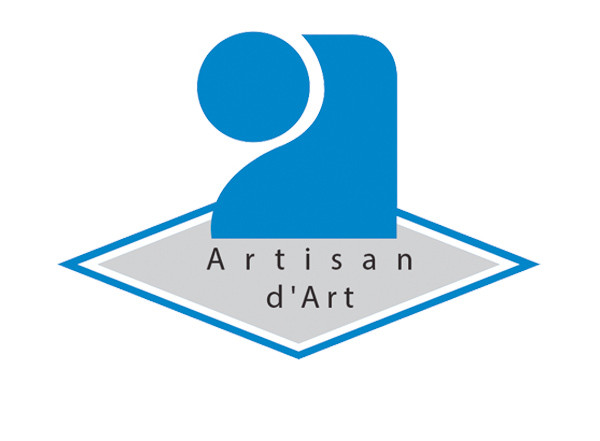What does a handpan cost?
Nowadays, you only have to surf the web to realise that there is sometimes a big difference in price between certain handpan models and brands. It's not surprising then to feel a bit lost, and to ask yourself: "But what is the right price for a handpan"?
Many people still use the term hang drum to designate a handpan, but rest assured that it is the same type of instrument. We're going to look at how - beyond the notion of supply and demand - the price of a handpan is determined and help you identify the right price/quality ratio for a handpan. These elements will help you to understand why the price of a handpan can range from 500 to 5000 euros.

What justifies the price of handpans?
Let's be clear, buying a good handpan can be as big an investment as any quality musical instrument.
From the materials, to the time spent on its manufacture, to the accuracy of the instrument, let's see the main elements that determine the price of a handpan.
The process of making a handpan
Making a handpan - even if different techniques are used depending on the manufacturer - is a demanding and long process. Many hours of work are needed to make this complex percussion instrument... All makers will tell you that, beyond the material and energy costs, it is above all the time spent and the quality of the handpan that justifies its price!
If you are interested in the subject, take the time to read our article "How to make a handpan".
The quality of the handpan
By quality we mean the nature of the material elements that make up the instrument combined with all the acoustic and vibratory criteria that a good handpan requires.
The type and characteristics of the metal used to make a handpan influence the final quality of the product. The more the metal selection meets the desired shaping criteria and vibratory properties, the better the handpan will be. It is no coincidence that handpans are not made of aluminium or titanium.
The manufacturing process of the instrument, the technicality and the experience of the manufacturer will also condition the quality level of a handpan.
Finally, the assessment of the sound quality of the instrument is a central point in defining the price of a handpan. It is based on a set of acoustic criteria that all good handpans should fulfil and which are explained here.
Demand exceeds supply. A trend that is being reversed?
As previously stated, handpan making remains a mainly craft-based profession. Its dazzling success and the constantly evolving demand have created a gap between supply and demand. But this gap is gradually narrowing with the advent of handpans made in Asia, which have been arriving in force on the European and American markets since the 2020s.
The prices that were driven up for two decades following the creation of the PanArt Hang - for increasingly sophisticated instruments, it is true - are now sometimes much lower. But beware of the tree that hides the forest, because a cheap handpan is still too often synonymous with mediocre quality and after-sales service
The brand
The brand is another important factor that can influence the price of a handpan. In general, well-established and respected brands in the handpan community tend to sell their instruments at a higher price than emerging brands. This is partly due to the higher quality of materials used, but also to the reputation and expertise that these brands have built up over the years. Reputable handpan manufacturers such as METAL SOUNDS have often invested a lot of time and effort in research and development to create a unique and high quality sound, and their name is often associated with top quality instruments and customer service.
Often lesser-known brands offer handpans at more affordable prices to gain a foothold in the market. But while price is usually a good indicator of quality, it should not be the only criterion for choosing a handpan brand, the sound and aesthetics of the instrument, as well as the after-sales service offered, should obviously also be taken into account.
Price ranges for a good handpan
It is quite complex to evaluate precisely the right price for a handpan, as it depends on many criteria, including those mentioned above, as well as the realities and expectations of each manufacturer and the customer. But we can still manage to estimate what a good price/quality ratio might be.
First of all, it is essential to know that there is an average price for a good handpan, and that we should be careful about instruments sold at too low a price. Making a quality handpan in France or in Europe requires a lot of know-how, time and techniques, so it is difficult to find one that will hold up for less than 1,000 €.
In 2023 on the handpan market, a quality 9-note model (with a cover) is worth between €1,200 and €2,500 depending on the brand, the model and the distribution channel (direct sale or via a dealer).
In order to guide you in your choice, we have classified the different handpan models into three categories according to the number of notes, without taking into account the diameter or the materials used. Indeed, considering that we are talking about quality handpans, it is essentially the number of notes that will define the price of a handpan:
- Handpans with 8 to 10 notes on the dome
While Panart set a standard based on 7 notes + 1 Ding (8 notes) with the creation of the HANG® in 1999, Felix Rhöner has also offered models with 8 notes + 1 Ding (9 notes) since the beginning of the 2000s. Handpans with 8 or 9 notes are nowadays the standard models that you will find at all manufacturers. For some years now, some manufacturers have also offered handpans with 9 notes + 1 Ding (10 notes). These models are perfectly suited for beginners and experienced musicians. The arrangement of the notes is classical and the playing is simplified.
Price range from 1200 euros to 2000 euros.
- Handpans with 11 to 15 notes on the dome
Some manufacturers, such as Metal Sounds with its chromatic model, offer instruments with a different note layout depending on the scale. Some handpans have 2 Dings, others have small high notes in the centre, others have an off-centre Ding to add high notes between the edge of the notes and the Ding...
In short, there are many variants depending on the range requested by the customers or the innovations of the manufacturers. These instruments are already a bit more complex to play and are mainly aimed at people with particular desires and/or specific needs.
Price range between 1800 euros and 3000 euros.
- Handpans with bottom notes ("mutant" or "master piece" handpan)
These handpan models were introduced in the 2010s. The musical range of the instrument is wider, the melodic universe de facto more extensive which is interesting in many ways. These handpans are therefore mainly played by professional or experienced musicians.
This placement of the notes below the instrument also has the advantage for musicians - especially those who travel frequently for concerts - of reducing the amount of handpans to be carried, thus making their logistics less constraining.
However, it is important to note that the acoustic perfection of a "Master Piece" handpan is rarely achieved due to the complexity of its construction. Interference and/or coupling between notes may be more pronounced than on a standard handpan, but this does not necessarily mean that the instrument does not sound good. The more notes the instrument has, the more likely it is that interference will occur, but manufacturers are becoming more and more ingenious in finding solutions, such as placing a plug in the ear (GU) to suppress certain interfering frequencies.
The notes positioned on the bottom also sometimes cause playing constraints, obliging the musician to turn the instrument on itself while playing or the difficulty of accessing the notes when the instrument is placed on a stand or on the thighs. In this regard, Metal Sounds recently launched a stand that is perfectly suited to handpans with bottom notes. It is particularly well suited to handpans with notes on the bottom.
Finally, the price of these little monsters is obviously much higher than that of a standard model. Expect to pay between 2000 and 3500 €.
These models are therefore not recommended for beginners and are generally custom made.
To sum up, many factors such as the manufacturing process, the time needed to produce the instrument, the number of notes or the experience and reputation of the manufacturer are all elements that can vary the price of a handpan.
For a well-made handpan with 8, 9 or even 10 notes, expect to pay between 1,200 and 2,500 €. Below 1200 € the risk of encountering acoustic and structural failures with your instrument can be significant.
For a quality "MUTANT" or "MASTER PIECE" handpan, count between 2000 and 5000 €.
The purchase of a handpan therefore represents a certain investment, and depending on the manufacturer or distribution channel, certain solutions exist to help you acquire a handpan: Split payments, rental, or even second-hand purchase... In all cases, take the time to find out more and talk to the manufacturer or dealer before embarking on this great and beautiful adventure!
If you are looking for more detailed information to help you make the right choice when buying your first handpan, we strongly recommend you to read our articles "How to choose a handpan" and "Where to buy a good handpan". You will find practical advice and recommendations to guide you through the buying process, as well as information on the key criteria to consider when choosing a quality handpan. Please do not hesitate to contact us if you have any specific questions about METAL SOUNDS Spacedrum handpans.
Did you like this article? Would you like to receive more information about the handpan? Subscribe below to our NEWSLETTER!



